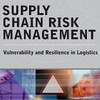 Yesterday I was talking about emergency logistics, today it is remote logistics. The other day I came across a very interesting post on Logistics Planning for Projects in Remote environments, a post that highlighted the importance of planning ahead and preparing for the worst when undertaking a development project in remote areas. Typically for such projects is that neither the logistics nor the infrastructure may be in place to the extent the project actually requires. The delivery of supply chain support for a project in a remote location has a number of challenges which need to be considered already at the planning stage. If these challenges are adressed, the projects stands a much higher chance of succeeding. So, what are these challenges?
Yesterday I was talking about emergency logistics, today it is remote logistics. The other day I came across a very interesting post on Logistics Planning for Projects in Remote environments, a post that highlighted the importance of planning ahead and preparing for the worst when undertaking a development project in remote areas. Typically for such projects is that neither the logistics nor the infrastructure may be in place to the extent the project actually requires. The delivery of supply chain support for a project in a remote location has a number of challenges which need to be considered already at the planning stage. If these challenges are adressed, the projects stands a much higher chance of succeeding. So, what are these challenges?
Project planning in remote areas
The post is in fact more than a year old, and the blog itself has a gap of one year between the most recent and the posts before that, perhaps because the blog owner himself was in a remote location? The posts and the About page would suggest so, but anyway, speculations aside, let me briefly recap the major logistics challenges in remote areas:
Local involvement and ownership
If on-site staff are involved in ordering supplies they are more likely to be aware of logistics challenges and local providers of services than the head office is, and they also be more ready to seek and find alternatives, should the need arise.
Packaging
Materials are probably being sourced far from the end project location, and then transported the same far way, and more often than not they are inappropriately packaged for forwarding over long distances using sub-standard equipment to an remote environment.
Transport arrangements
Transport may be difficult because there is maybe only one possible route, and possibly this route, e.g. road, may even have been built specially for the project, and thus, it may not be properly cared for. This means that there is often little if any existing infrastructure to support the transport of goods and material from the point of import or landing to the site.
Delays
Given the non or poorly existing infrastructure, delays are the rule, not the exception. This also means that there is little point in mobilizing a large work crew on-site in anticipation of the arrival.
Inventory Control System
On-site inventory control may be hard, a) because of improper storage facilities (e.g. lack of security and/or an on-site inventory manager), and b) lack of control over who has the power to collect and sign for materials. Responsibilities need to be clearly established and exercised firmly.
Disposal of surplus
Because of the difficulties in supplying the project, there is often a tendency to over-supply with greater than usual levels of contingency. A surplus of materials is quite common after the project is finished, but how does one get rid of excess materials?
Want to read more?
These are just some of the highlights mentioned in the above article. I do suggest reading the article in full for further insights. The blog is written by someone who obviouslyworks in the field, and who has experiences his share of challenges working on projects that requried remote logistics.
Bad locations – bad logistics?
This post does remind me of my own research into logistics challenges in sparse transportation networks, where even in not so remote areas, logistics challenges abound. While not directly transferable to my research, the post on remote logistics has given me some food for thought.
Link
- kruegs.wordpress.com: Logistics Planning for Projects in Remote Areas
Related
- husdal.com: Bad locations – Bad logistics?












